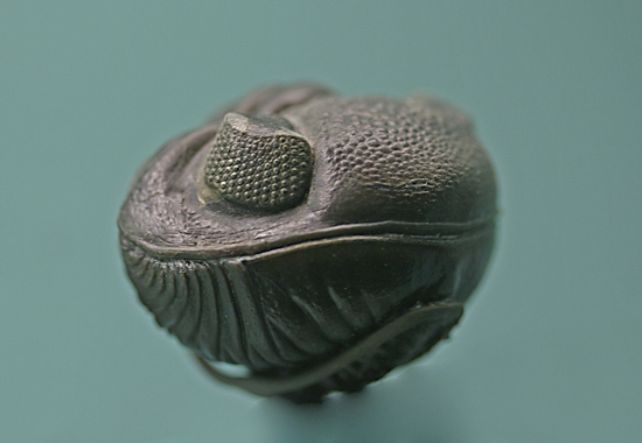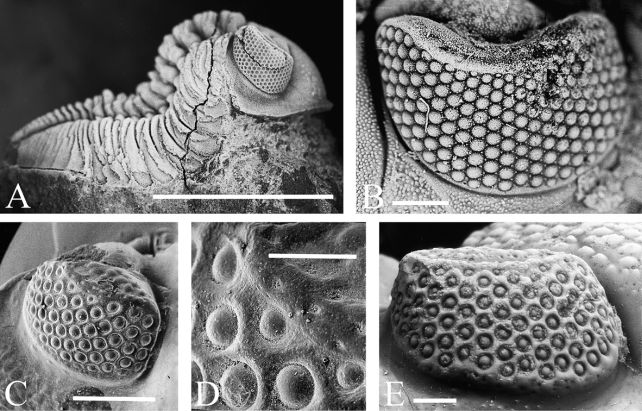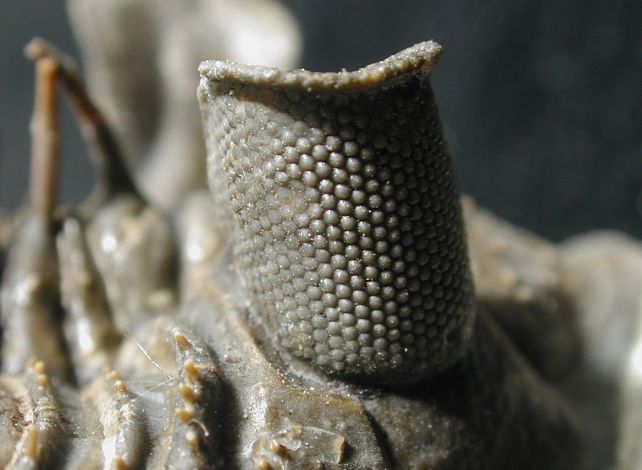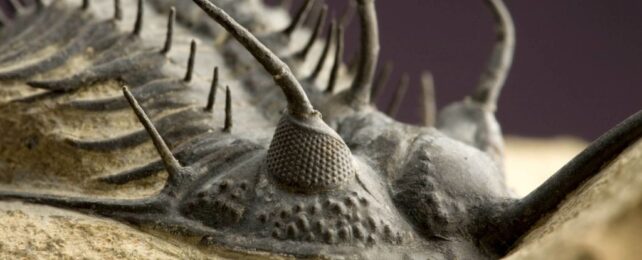Nature has tried some pretty wild approaches to life's problems over the eons, and that's true for vision.
One of the earliest examples of a complex eye may have relied on a rather unusual material for focusing light, one not found in modern organisms. The eyes belonged to an extinct group of animals called trilobites, and their eyes were made of hard crystal, a mineral known as calcite – a strange little quirk that gives us a window into how these early animals sensed the world around them.
Trilobites died out about 250 million years ago but were around for some 300 million years before that. There are also plenty of trilobite body plans in the fossil record, which suggests that those 300 million years were very successful ones. And because their strange eyes were made of stone, they were often beautifully preserved in the many fossils they left behind.

This is how we know that trilobites had compound eyes like insects, consisting of clusters of photoreception units called ommatidia, each with its own photoreceptors and lenses. Examinations of broken sections of the fossilized lenses reveal a crystalline material made of calcite.
Pure calcite is transparent, so, in theory, light could penetrate it and be focused, where the photoreceptors might detect it. As with insect vision, there was likely a trade-off: Trilobites probably didn't see in high spatial resolution, but they were particularly sensitive to motion.
There were three kinds of these trilobite eyes. The oldest and most common is a type known as holochroal, in which small ommatidia were covered by a single corneal membrane, with the adjacent lenses in direct contact with each other.
The abathochroal eye is only seen in the family Eodiscidae; the small lenses are each covered by a thin cornea.
Finally, the schizochroal eye is only seen in the Phacopina suborder. The lenses are larger, widely separated, and each has its own cornea. They were probably, scientists believe, highly specialized.
The holochroal eye is the most similar to modern apposition eyes seen in some insects and crustaceans, and scientists believe they worked in a similar way. Each ommatidium operates individually, and the image the insect sees is a mosaic of all the images combined.

Things get a little tricky with calcite, though. Calcite has one of the strongest birefringences in nature. That means it has two refractive indices; light will be split twice as it travels through calcite, the two rays traveling at different speeds, producing a double image.
For small ommatidia, as seen in the holochroal eye, this is unlikely to be a problem; the deviation in the rays is smaller than the light-sensing organ.
For the schizochroal eyes, birefringence represents more of a problem. Crystal is not flexible, so the larger ommatidia can't change its focus to reduce the effect. Instead, scientists have found that schizochroal eyes have what is known as a doublet lens structure.
That means the lens has two layers, each with a different refractive index, that could correct for birefringence, almost like the trilobites had built-in spectacles. Lenses of this type were invented, separately, by mathematicians Rene Descartes and Christian Huygens in the 17th century, unaware that trilobites had beaten them to the punch.

For all our understanding of the various structures of the trilobite's eye, though, we still don't quite understand how the schizochroal eye worked, whether it was similar to an apposition eye or did something differently, as the different structure would suggest.
A recent study showed schizochroal eyes are far more complex than we thought, which brings us closer. Each lens was found to cover a small compound eye of its own, forming a sort of "hyper-eye".
It could even be possible we've been entirely wrong about trilobite vision. A 2019 study questions whether the calcitic corneas may have been artifacts of the preservation process, implying their crystal eyes are far less unique than many speculate.
We still don't know why this type of eye emerged – if it did at all – or what benefits it conferred, but now scientists studying trilobite vision have a new way to look at it.
